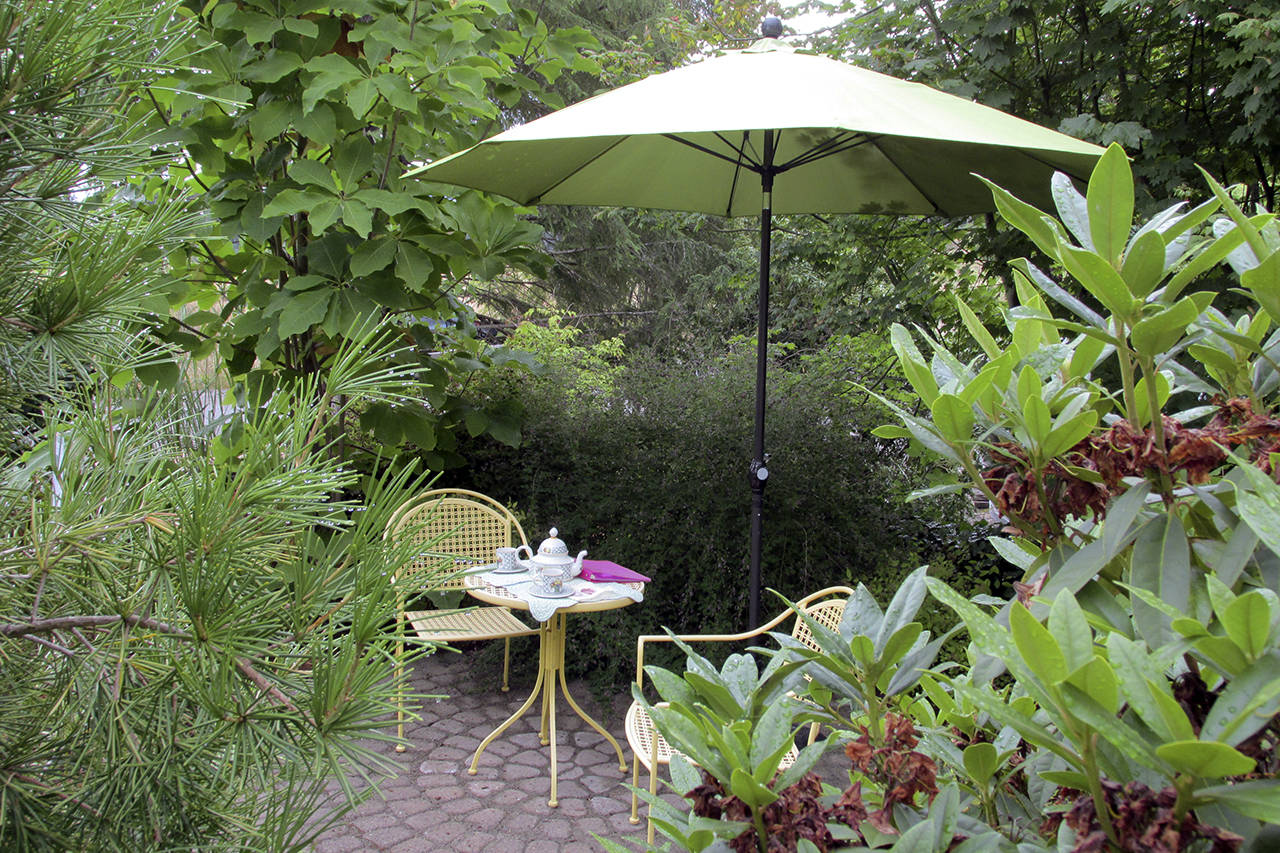My partner, Chuck, and I moved to Montesano in 1996. We bought our home and property on the outskirts of town, in the Val Vista area, mostly because the half-acre would give us plenty of room to garden. We both had loved gardening at our former home in Fresno, California, and we were eagerly looking forward to gardening in a much cooler climate.
From 1996 to 2014, I was able to garden without pain. Chuck and I developed the property into a series of perennial and shrub beds and one large vegetable garden, all in the backyard. Early on, we removed the front lawn and created a series of winding paths, with beds of trees, shrubs and some perennials. We also hired someone to clear the brush off two-thirds of the back hill. Then we hired a Running Start student to develop paths down and across the hill.
By early 2014, it was clear that my notion of escaping arthritis was wishful thinking. I suffered through that summer, hauling hoses to water all over the property, then had my right hip replaced in late September. I was back in the garden working the following spring, in time to get ready to open our garden as part of the 2015 WSU Master Gardener garden tour.
Today, I am recovering from having my left hip replaced in April. I am grateful that a professional gardener comes weekly to get the work done that I have not been able to do for over a year. But now I need to plan.
First, with 20/20 hindsight, here’s what we should have done earlier:
■ Built handrails on the paths on the hill. During the rainy season, I have to avoid the paths and railroad-tie stairs because they are too slippery.
■ Installed more drip irrigation to the hydrangea and other shrubs and trees on the hill so that I do not have to drag a hose and sprinkler down to water them during our dry summers.
■ Pretty as they are, I should have planted fewer perennials and instead used more shrubs in three of the large borders in the area above the hill.
■ I should not have planted a couple of nuisance plants — the paradise lily is a great example.
Second, I am grateful we did these things as we built the garden:
■ We planted the front garden with almost all trees and shrubs. Most of this garden is on drip irrigation, which lessens the need to haul hoses round and reduces our water bill. The front garden is full of rhododendron, deciduous azalea and trees — magnolia, Japanese maple — with a hedge of vine maple along the south side of the property.
■ We installed drip irrigation for the vegetable garden and for the shrubs and trees on the upper part of the hill. The garden area off the lower path is moist, but a sprinkler is needed in three places in the lower garden starting in June.
■ Some of the nuisance plants I put out when I first moved here are now handy ground covers: violets, lilies of the valley and hardy geraniums — one of my favorite perennials, colorful most of the summer and, like the other two, a good spreader.
Third, ideas for the immediate future and beyond:
■ I need to find a lightweight rolling garden seat so I can weed and plant easily, without bending or working on bended knees. Both approaches are detrimental to one’s back, and I sure don’t need to exacerbate my back pain. I have a garden seat/kneeler, but it weighs too much to cart from gardening spot to spot.
■ When lifting or carrying, I need to remember to keep my arms and the things I am carrying as close to my body as possible to protect my back and shoulders.
■ I will do a better job of keeping tools sharp. I learned long ago to clean dirty tools before they are put away, but the occasional sharpening is important, too.
■ I will focus on maintaining proper posture — pushing, lifting, carrying and digging correctly.
■ Finally, I will alternate gardening tasks more often and take breaks when needed. (I already alternate some tasks. Digging up buttercups can get boring quickly.)
Mary Shane, a Master Gardener since 1998, gardens on about a third of an acre in the Val Vista area, with a lovely view of the Sylvia Creek valley to the east.


